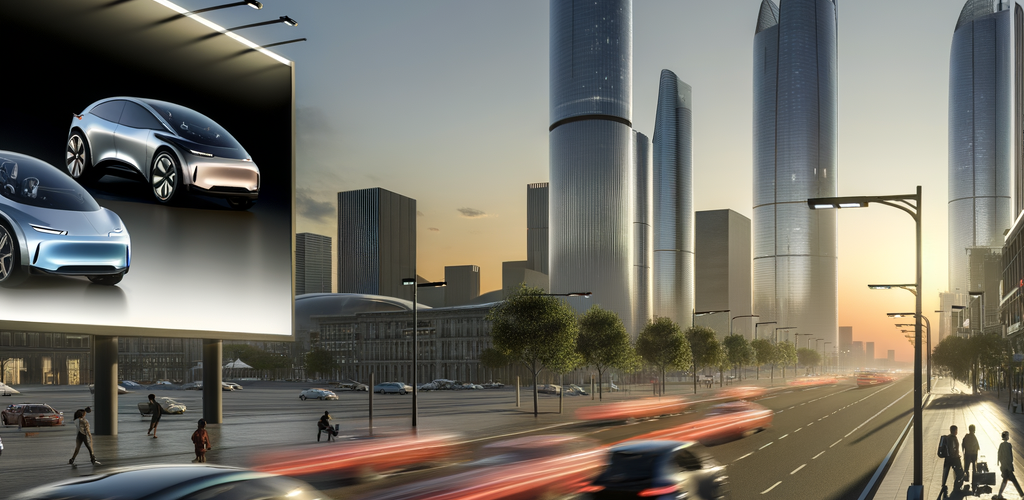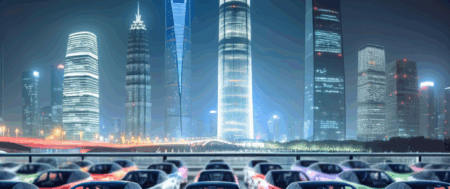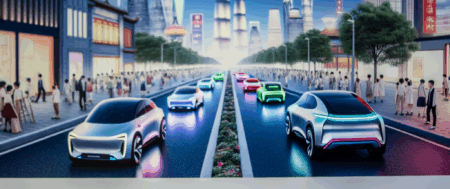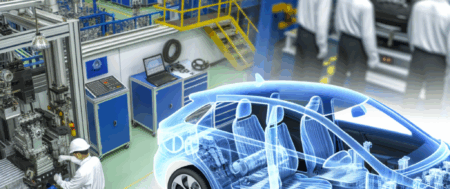China holds the title as the world’s largest automotive market, fueled by its growing economy, rapid urbanization, and increasing environmental concerns. The demand for Electric Vehicles (EVs) and New Energy Vehicles (NEVs) is soaring, driven by consumer preferences for eco-friendly and technologically advanced transportation solutions, coupled with significant government incentives. To navigate the unique regulatory landscape, foreign automakers are entering into joint ventures with domestic car brands, leveraging strategic partnerships to tap into local market insights. Success in this highly competitive market hinges on aligning with government policies, responding to shifting consumer preferences towards technological advancements, and fostering effective collaborations between domestic and international players.
In the heart of the global automotive industry’s evolution, China’s roaring engines of growth, urbanization, and technological innovation have positioned it as the top contender on the world stage. As the largest automotive market, both in terms of production and sales, China’s journey is not just a tale of numbers but a fascinating story of strategic adaptation, environmental foresight, and the blending of cultures and technologies. With its rapidly growing economy fueling an insatiable demand among a burgeoning middle class, the country’s urban landscape has become the epicenter of a dynamic shift towards Electric Vehicles (EVs) and New Energy Vehicles (NEVs), driven by pressing environmental concerns and robust government incentives.
This narrative unfolds in a market where foreign automakers and domestic car brands vie for supremacy, often through joint ventures that navigate the complex regulatory landscape, tapping into consumer preferences that increasingly lean towards sustainability and innovation. The competitive spirit is alive and well, fueled by technological advancements and strategic partnerships that are essential for success in this lucrative yet challenging arena.
As we delve into the intricacies of China’s automotive market, from the surge in EVs and NEVs to the critical role of joint ventures and the influence of government policies, it becomes clear that understanding this market is about more than just cars. It’s about grasping the future of mobility in a world where environmental concerns, market competition, and the drive for innovation intersect. Join us as we explore how China’s growing economy, urbanization, and commitment to green technology are not only propelling its automotive market forward but also setting the pace for the global industry at large.
- 1. “Navigating the Largest Automotive Market: China’s Growing Economy and Urbanization Drive Demand”
1. “Navigating the Largest Automotive Market: China’s Growing Economy and Urbanization Drive Demand”

Navigating the complex and dynamic terrain of the world’s Largest Automotive Market, China stands as a formidable challenge and an unparalleled opportunity for both domestic and foreign automakers. At the heart of this market’s expansion are the twin engines of a rapidly Growing Economy and accelerating Urbanization, fueling an insatiable demand for mobility solutions. This demand spans a spectrum from traditional gasoline-powered vehicles to Electric Vehicles (EVs) and New Energy Vehicles (NEVs), the latter categories buoyed by significant Government Incentives and a societal push towards mitigating Environmental Concerns.
In this vast and varied landscape, Consumer Preferences have increasingly tilted towards innovation, eco-friendliness, and cutting-edge technology, making Technological Advancements a crucial battleground for companies vying for market share. The appeal of EVs and NEVs, in particular, has skyrocketed, not just as a statement of environmental consciousness but also as a testament to China’s commitment to leading the charge in the future of mobility.
Foreign Automakers, attracted by the sheer volume and potential of the Chinese market, often find themselves navigating a Regulatory Landscape that is as challenging as it is unique. The solution for many has been forming Strategic Partnerships through Joint Ventures with Domestic Car Brands. These alliances serve multiple purposes: they offer a direct avenue to tap into the local market knowledge and consumer base, allow for a sharing of technological know-how, and provide a pathway to navigate the regulatory requirements with greater ease.
The competition in China’s automotive sector is intense and multifaceted, reflecting the broader Market Competition that characterizes the global industry. Success in this arena requires more than just technological superiority or a deep product lineup. It demands an understanding of the local market nuances, from consumer behavior to government policies. The companies that thrive are those that not only adapt to the current landscape but also anticipate future trends, be they in technology, consumer demand, or regulatory changes.
In summary, the Largest Automotive Market in China is a microcosm of opportunity and challenge, driven by a Growing Economy, Urbanization, and a push towards greener mobility solutions. For automakers, both domestic and international, success hinges on their ability to innovate in the face of Technological Advancements, align with Government Incentives, understand and cater to evolving Consumer Preferences, and form effective Strategic Partnerships. As the market continues to evolve, so too will the strategies of those looking to make their mark on China’s automotive future.
In summary, China’s position as the largest automotive market in the world is a testament to its rapidly growing economy, expanding urbanization, and the evolving preferences of its burgeoning middle class. The market’s dynamism is fueled by a high demand for both domestic car brands and foreign automakers, with electric vehicles (EVs) and new energy vehicles (NEVs) at the forefront, driven by government incentives and growing environmental concerns. The competitive landscape is further shaped by the strategic partnerships formed through joint ventures, which are essential for foreign companies to navigate the complex regulatory landscape and tap into China’s vast consumer base.
Understanding the intricacies of consumer preferences, staying abreast of technological advancements, and aligning with government policies are crucial for success in this highly competitive market. The future of the automotive industry in China looks promising, with opportunities abound for those who can adeptly manage the challenges posed by market competition and regulatory constraints. As China continues to lead in the global automotive arena, the importance of innovation, strategic partnerships, and a deep understanding of the local market cannot be overstated. For businesses aiming to make their mark in the largest automotive market in the world, the road ahead involves a continuous adaptation to the evolving landscape of China’s economy, urbanization trends, and the shifting tides of consumer demands and environmental considerations.







